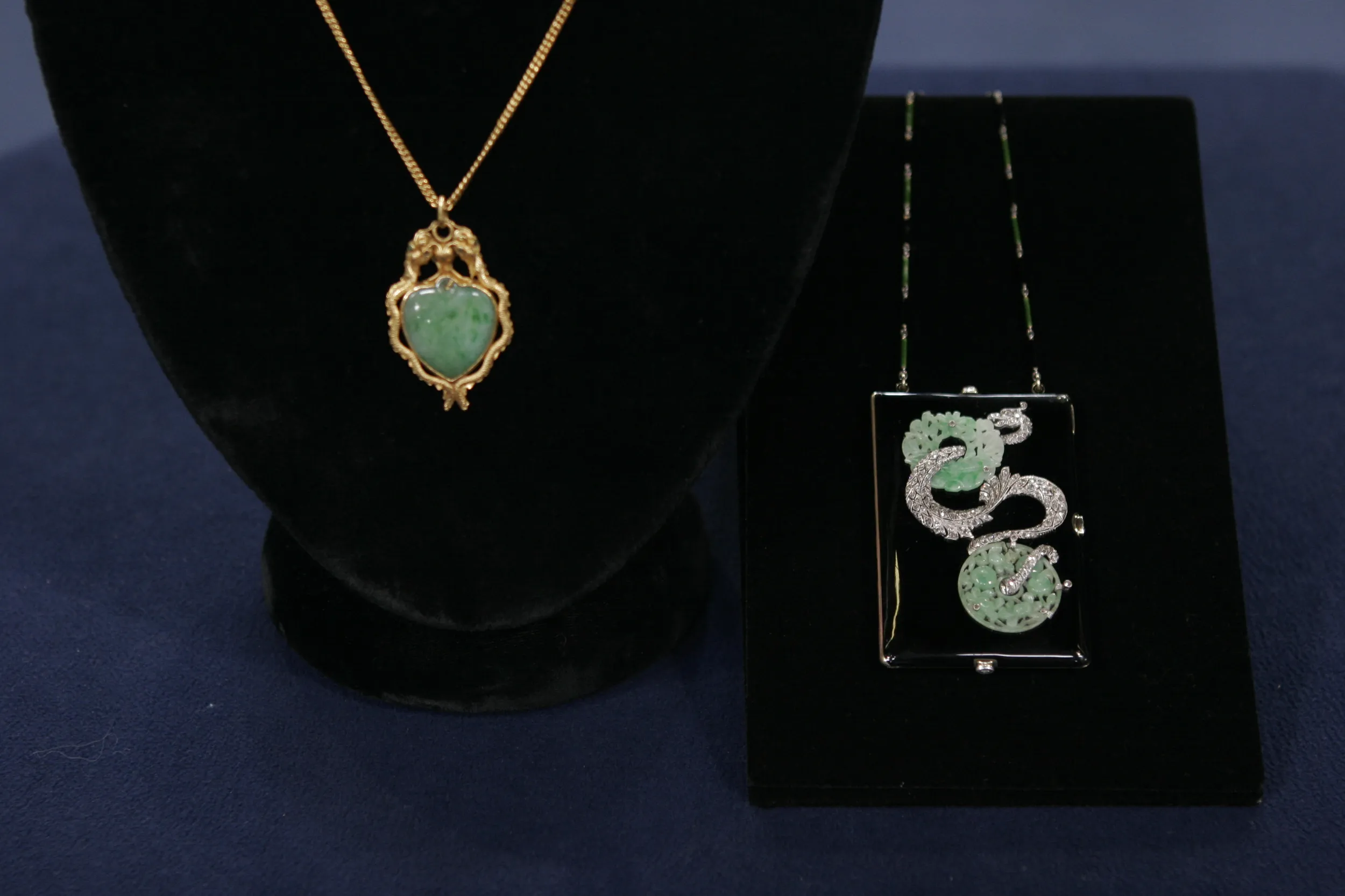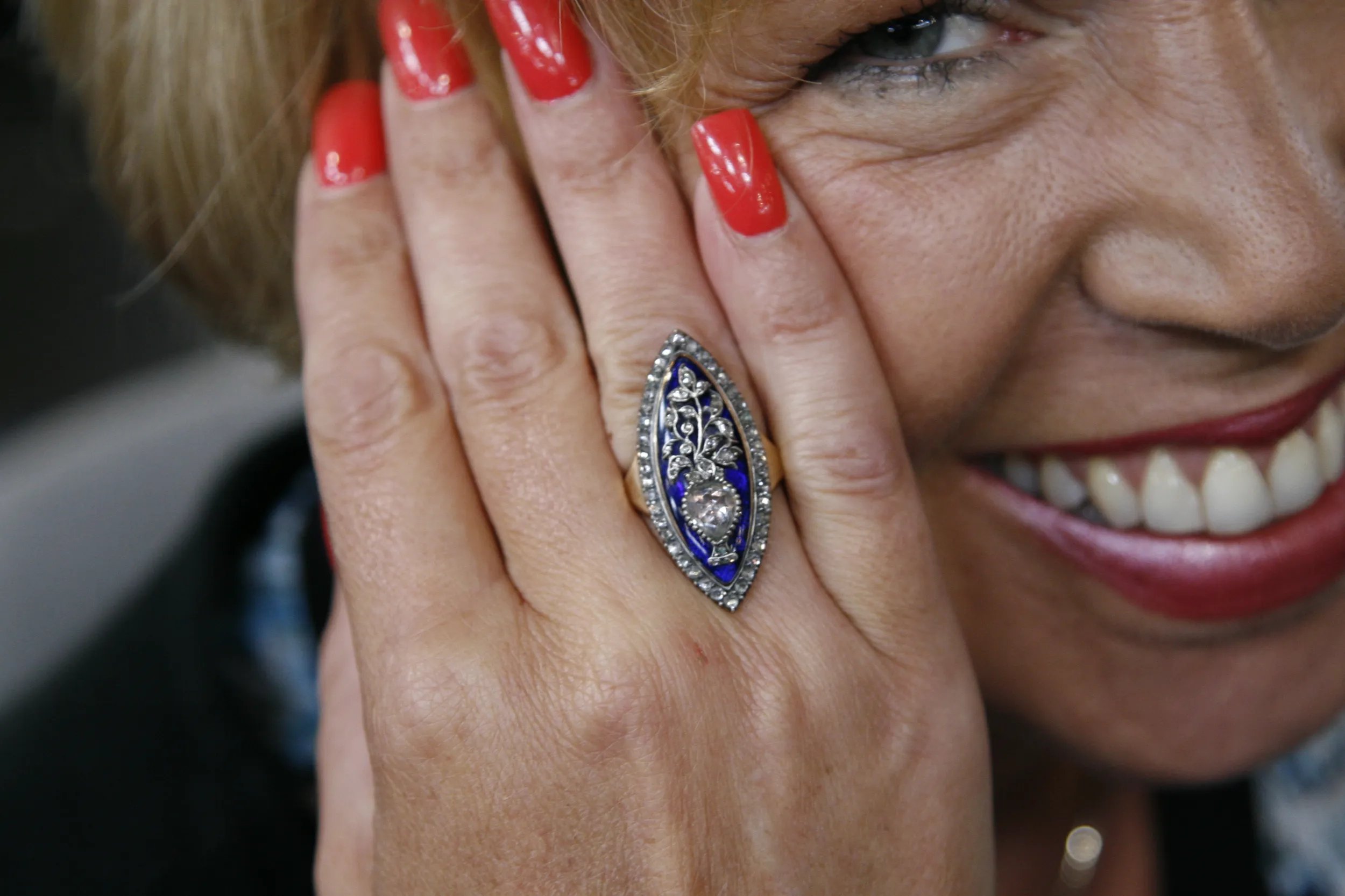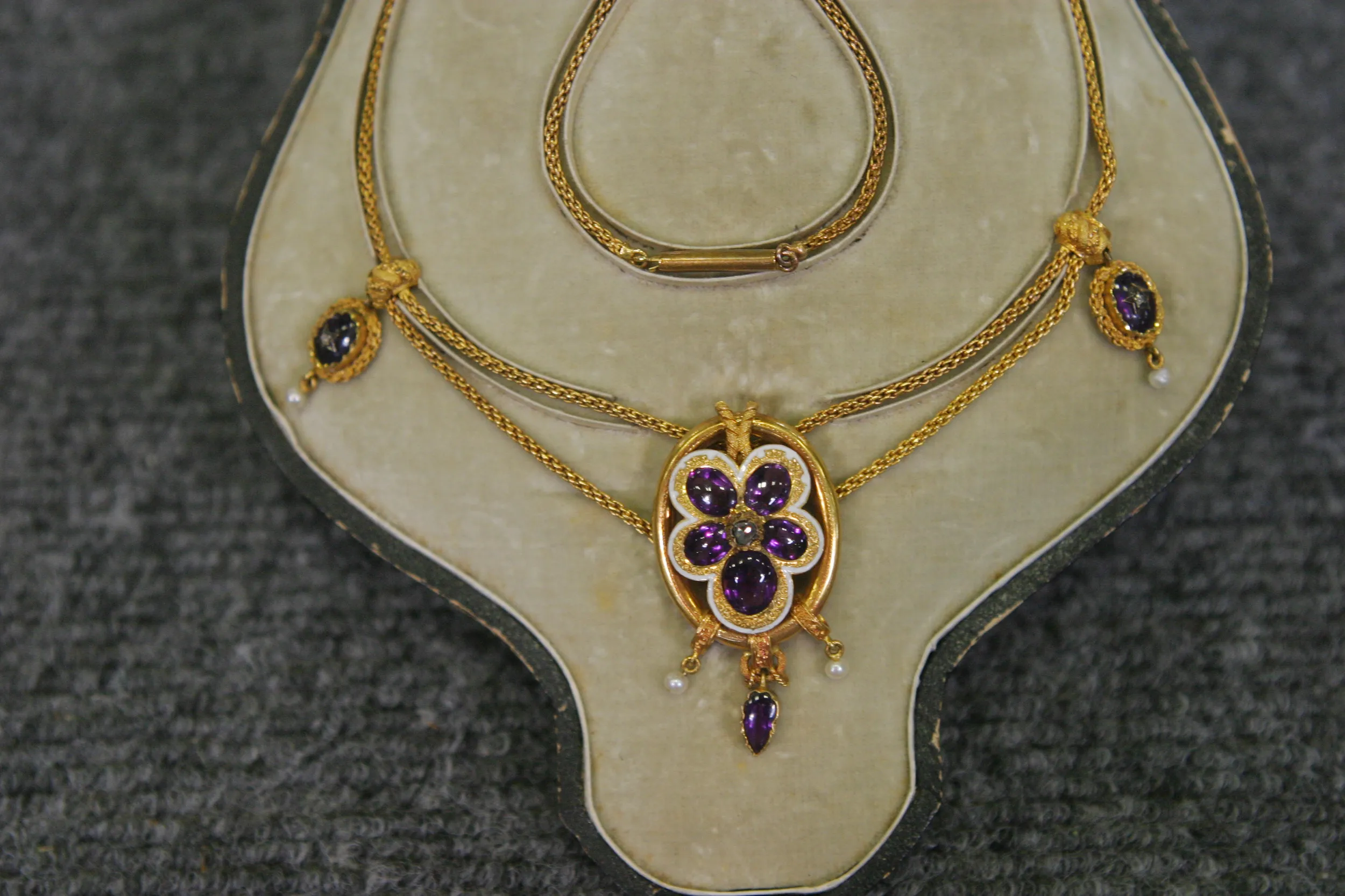GUEST: I was told when I purchased it that it was jade. But I never had that confirmed, and I've always wondered. I purchased it at an auction about ten or maybe a little more than ten years ago. And at the time it was sold for jade. I paid about $50 for it.
APPRAISER: One of the first things that attracted me to it is the shape. This kind of sloping side, circular outline vessel is not a normal kind of shape you run into in Chinese art, and this is Chinese.
GUEST: Okay.
APPRAISER: In jade forms. It's kind of a bowl, but it's got three supports. And each of those supports have stylized lion mask, monster mask heads on these little, squat feet. They're absolutely terrific. The bulging eyes and the fearsome kind of face, and then these little, short legs. So I'm going to turn it over because we would love to see right here in the middle, I'd love to see right there a mark. But guess what's not there.
GUEST: No mark.
APPRAISER: There's no mark. But we can see that the bottom of the feet are really well defined. And then aside from that, as we look on the side, there's subtle indications about the stone. So right here you can see this veining.
GUEST: Yes.
APPRAISER: Now, jade comes from different locations in China, and there are different levels of quality and color. And this pale green color we have associated with mid to late 18th century design, but you also have that same kind of color present in early 20th century objects. And the shape is also interesting because, again, it's got the sloping side, but you'll notice that the rim here is fairly thin. Beautifully cut, beautifully hollowed out. It's a little on the thin side, which is something that you associate potentially to the 18th century, but also potentially in the early 20th century. There happens to be forms that exist from the 17th century and 18th century, even into the 19th century that approximate this shape. They were used as censers. And as a censer, you'd put sand in the base and incense sticks on it. But it's an unusual kind of shape. A conservative dating would be from the first order of the early 20th century. But I could argue that it could be from the late 18th, early 19th century. But it's inconclusive, and I think a conservative number is going to be in the range of $15,000 to $20,000. And that would be at auction.
GUEST: I'm astonished. (laughing) Totally unexpected. Totally astonished.
APPRAISER: Let's pretend that I could prove that it was to a period such as the Jiaqing period, which was an emperor that followed the Qianlong emperor, so 1796 to 1820. If it were from that time period, then I think you're probably looking at a value that's more in the $50,000 to $80,000 range.
GUEST: That is incredible.
APPRAISER: At auction.
GUEST: That is incredible. It's such a shock, truly. Brings tears to my eyes.











